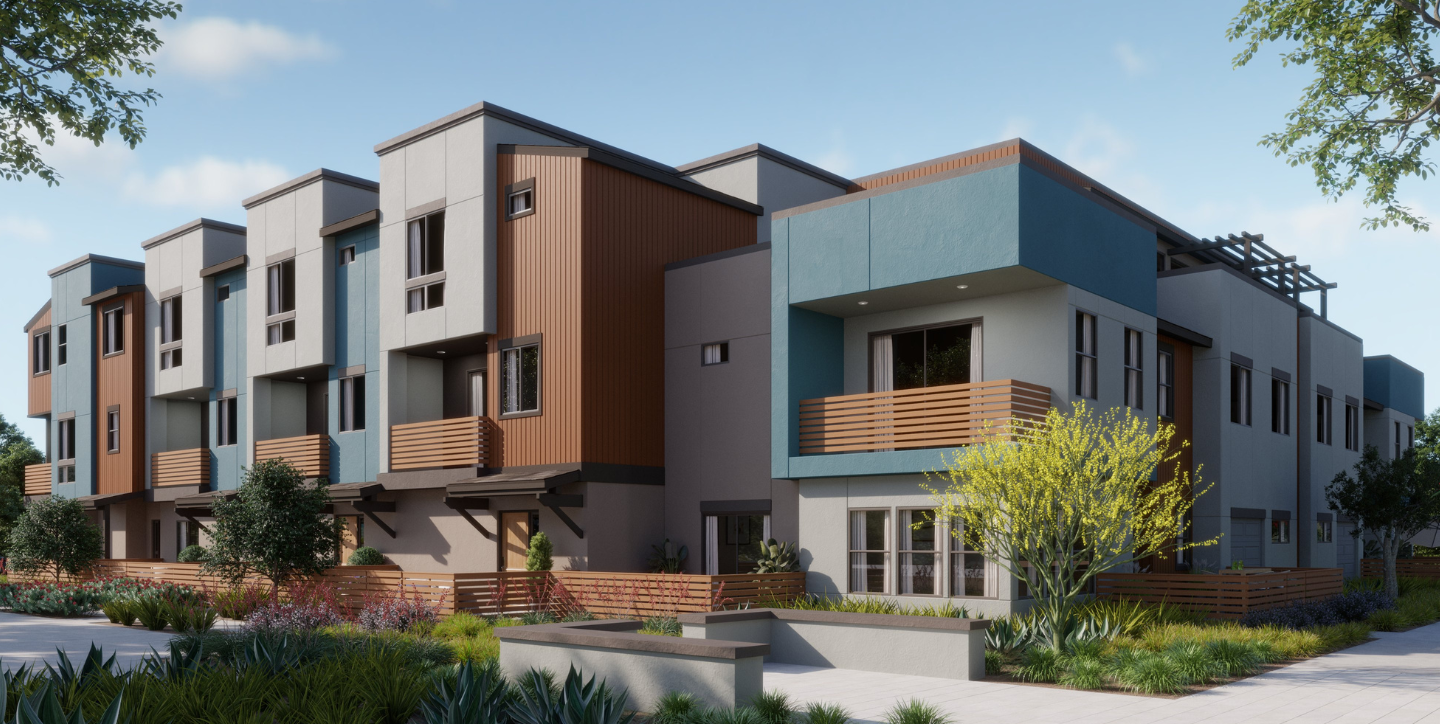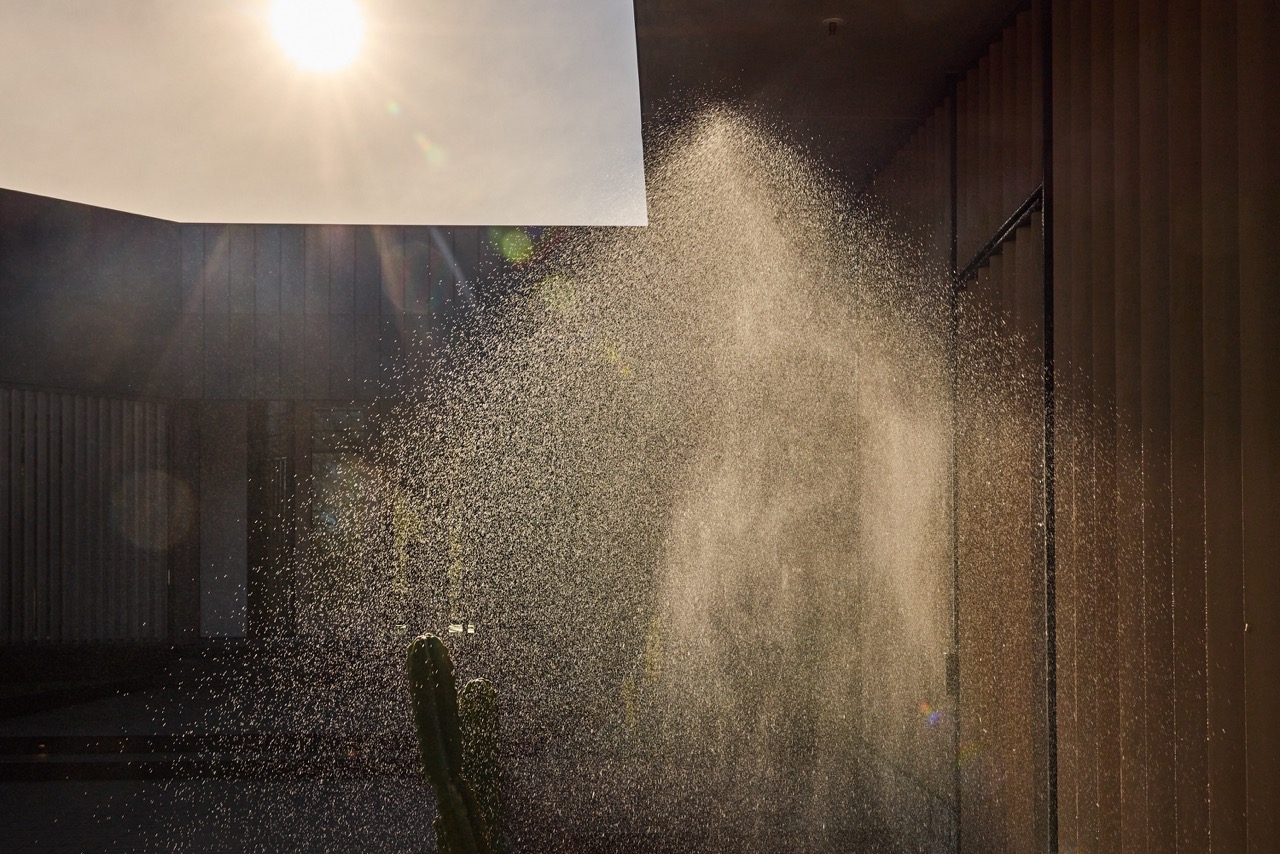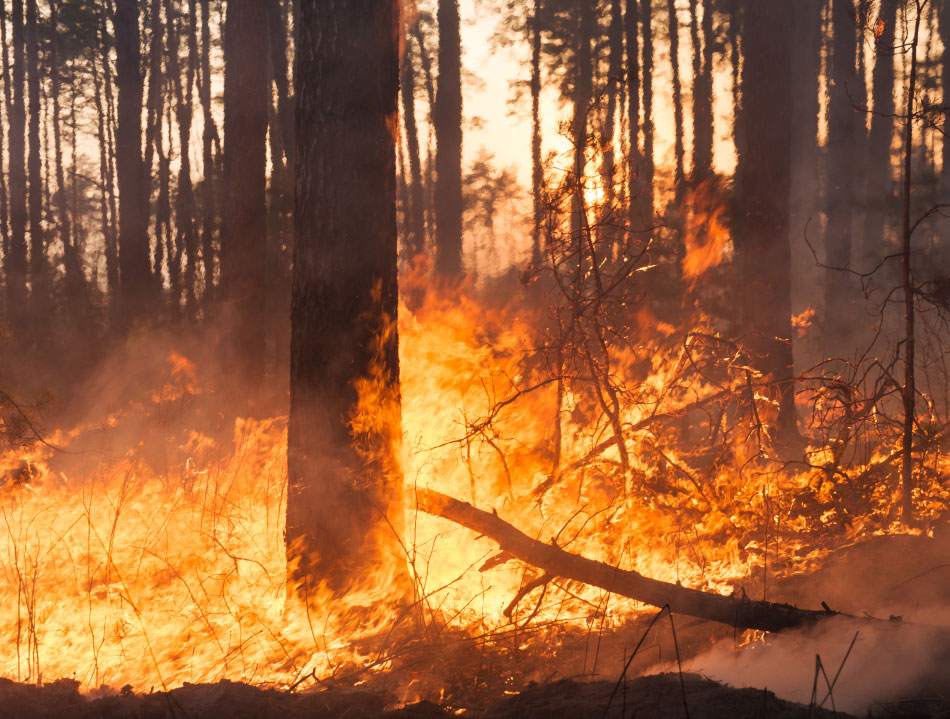
When talking about climate change and wildfires, the cause-and-effect relationships are far from simple.
Here, we’ll provide a clear and fact-based understanding about how wildfires affect climate change, and vice versa.
Knowing how climate change affects wildfires will help you make more effective decisions about protecting your property and contributing to a healthier ecosystem.
Does climate change cause wildfires in California?
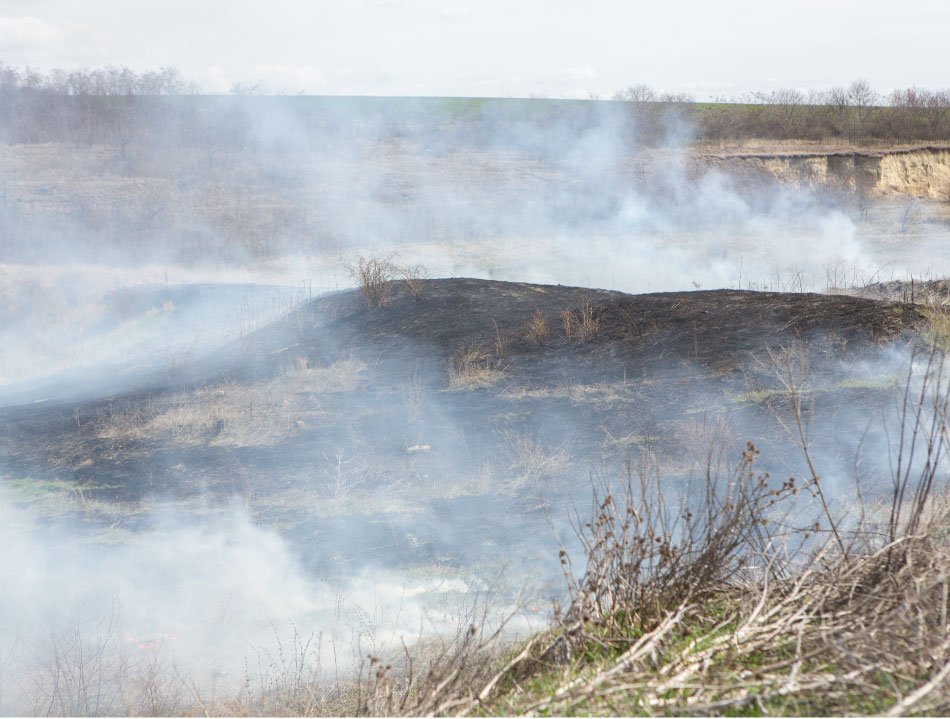
Does climate change cause wildfires? It’s a simple question with a complex answer.
Global warming and wildfires are linked. Climate-related factors contribute to California wildfires and California wildfires also worsen climate change.
Climate change creates conditions that increase fire risk, but that doesn’t tell the whole story. There’s a strong human element—in California, humans ignite 90% of wildfires, and additional factors add to the complexity of the issue.
Climate-related factors contributing to wildfires
Some might claim that wildfires are not caused by climate change. Wherever you stand on the debate, it’s clear to see that climate change creates conditions that increase fire risk.
Does climate change cause wildfires? Consider these impacts:
- Rising temperatures create dry conditions and parched vegetation that is easy to ignite.
- Longer periods of drought similarly create dry landscapes that burn faster and hotter.
- Lower snowpack and earlier spring thaws mean there’s less meltwater and it dissipates faster, contributing further to dry conditions.
- Stronger winds, such as the Diablo and Santa Ana, quickly drive fires over larger areas. The winds can quickly turn a small fire into a major disaster.
- More lightning strikes occur when hot and dry air rises and interacts with the upper atmosphere, a phenomenon that is responsible for 71% of land burned in wildfires.
- The changing climate increases the number of non-native species that change the ecosystem, pushing out fire-resistant native plants.
Can wildfires cause global warming?
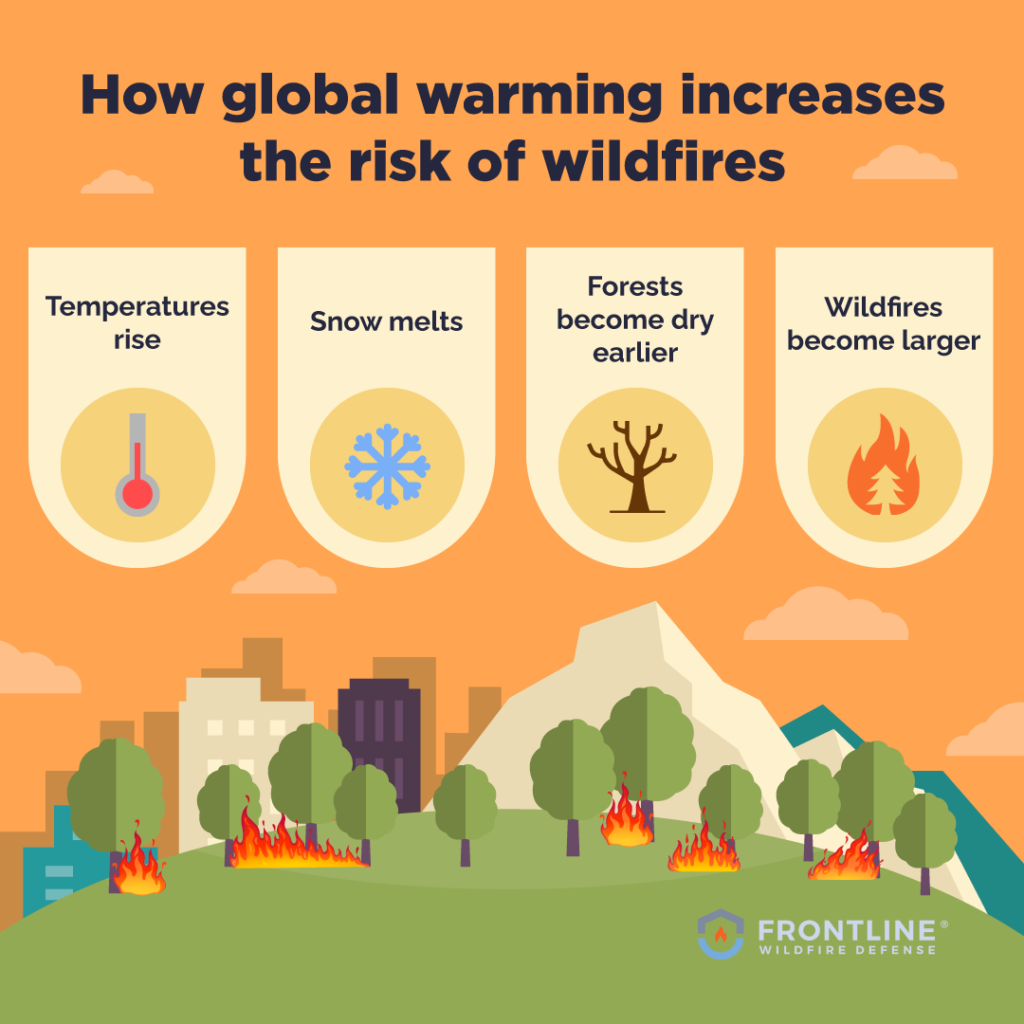
Wildfires and climate change are linked by more than cause. Wildfires also affect the climate in negative ways.
Wildfires emit an enormous amount of the greenhouse gas carbon dioxide. Wildfires burning in 2020 in California threw 91 million metric tons of carbon dioxide into the atmosphere, exceeding the amount created in power generation by some 30 million metric tons.
The particles in the smoke include aldehydes, acid gasses, sulfur dioxide, nitrogen oxides, polycyclic aromatic hydrocarbons (PAHs), benzene, toluene, styrene, metals, and dioxins. These stay suspended in the atmosphere, spreading toxins across a wide area.
Vegetation consumed by fire can no longer remove greenhouse gasses from the air. Plants remove 2 billion metric tons of carbon from the atmosphere worldwide. An acre of forest can take nearly 445 tons of CO2 out of the atmosphere. Every acre lost to fire reduces the amount of carbon that living plants can remove from the air.
In these ways, wildfire impacts on climate change negatively influence California ecosystems.
How do wildfires impact the environment in California?
Climate change and wildfires are linked to global warming, and the impacts specific to the California environment are felt by nearly every resident.
California wildfires have dramatically increased greenhouse gasses in the state and surrounding areas. In 2020, a record wildfire year by acres burned, they were second only to transportation in terms of producing greenhouse gasses.
Other ways wildfires and climate change cause environmental harm in California include:
- Threatening wildlife, causing deaths and severe injuries.
- Destroying habitats and altering ecosystems, affecting plant and animal biodiversity.
- Increasing erosion as soil loses the protection of plants and their root systems and washes away, creating runoff with pollutants that cause damage downstream.
- Air quality falling to dangerous levels due to particulates and gasses in the atmosphere.
Better management to restore the health of forests is a centerpiece of how California is dealing with the carbon and forest fire issue. The state works with the federal government, which owns vast tracts of land in the state, to manage controlled burns, employ mechanical thinning of vegetation, and restore burned areas with native plants to rebuild ecosystems.
Are there any positive effects of forest fires on the ecosystem?
Wildfires are nothing new in California. Hundreds of years of regular forest fires create ecosystems that are fire-adapted and even fire-dependent. Wildfires play a beneficial role for many species of plants and animals.
When fire burns built-up organic debris, nutrients return to the soil. With the shade of the forest canopy gone, new seedlings and smaller plants and grasses have a chance to grow.
Fires spark animal movements that lead to greater biodiversity. When animals move into new areas, driven by fires, they bring genetic diversity to populations in those new areas.
Plant species like the lodgepole pine depend on fire to release seeds so they can germinate in soil that is newly open to light after a fire. Black-backed woodpeckers build nests only in dead trees left after a fire and feast on the insects that are attracted to the remains of trees.
While a wildfire can be devastating, controlled burns can actually strengthen ecosystems in California.
What can be done to address wildfires and climate change?
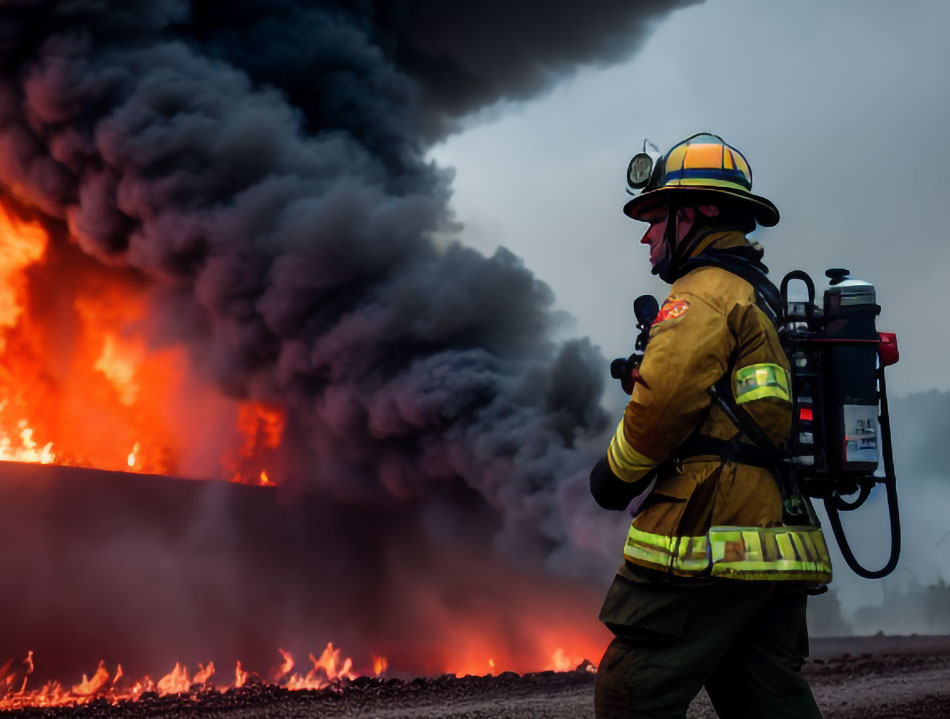
Addressing climate change is a big task that will require individuals, governments, and businesses to work together in making change. In the meantime, California homeowners and policy leaders can take steps to reduce wildfire risks and minimize property destruction.
The following guidelines can help communities, builders, homeowners, and forest managers reduce uncontrolled wildfires and the destruction they cause in the state:
- Increasing the space between structures and nearby trees and brush.
- Revising California state and local building codes to incorporate fire-resistant design features and materials in buildings, including interior and exterior sprinkler systems.
- Increasing resources allocated to firefighting and fire prevention, while upgrading the tactics and techniques of California firefighters.
- Removing dead trees from forests that are at risk.
- Developing recovery plans specific to individual California ecosystems before a wildfire strikes, and implementing plans quickly to minimize habitat damage.
- Discouraging residential developments near fire-prone forests through smart zoning rules that take into account past wildfires and wildfire prone areas, when issuing permits.
With or without climate change, it is a fact that many wildland urban areas are at a greater risk of wildfires. At Frontline, we believe that wildfire is an essential part of the natural cycle of plant communities. An automated wildfire sprinkler system defends your property from fire destruction and gives you true peace of mind.
